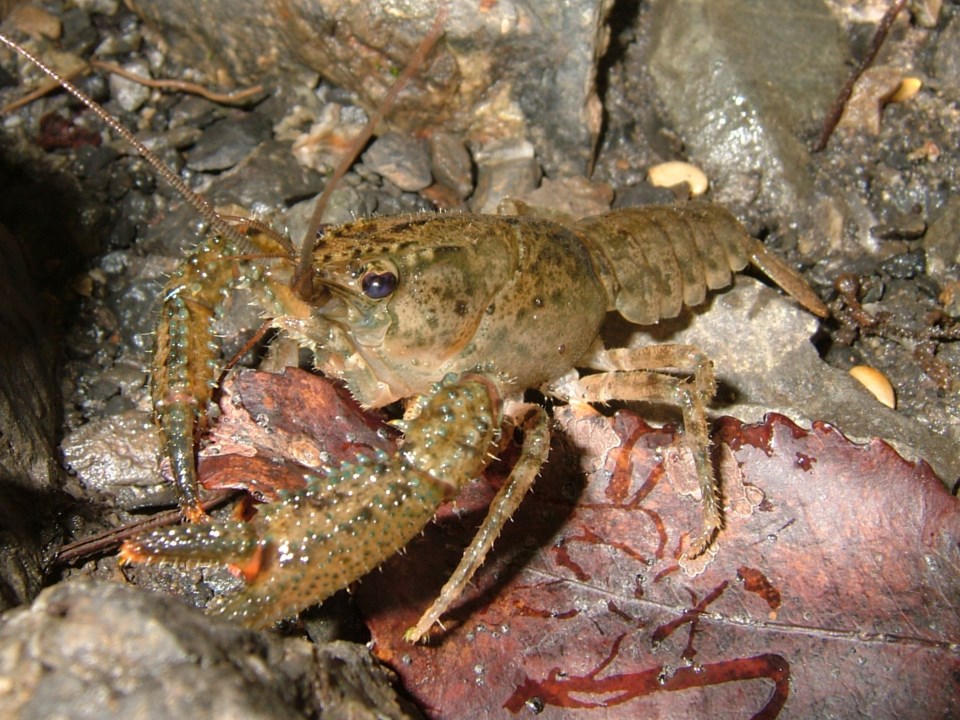The recent discovery of a crayfish population near Airdrie has one local environmentalist expressing concerns about impacts to the Bow River trout population.
Guy Woods stumbled across broken crustacean shells along the shoreline of Nose Creek, near Airdrie, last month. At first, he dismissed the shells as blue crab being used as bait by an area fisherman — but soon Woods was standing in the creek, net in hand, staring at a crayfish.
“When you see crustacean shells on the side of a southern Alberta trout stream, you don’t naturally think about a native crayfish population,” said Woods with a laugh. “I was a little skeptical.”
The crayfish he caught came complete with a mass of eggs, he said. Combined with the juvenile crayfish he caught on another visit to the creek confirmed Woods’ suspicions.
“Crayfish are reproducing in Nose Creek,” he said. “They are inhabiting, reproducing and seem to be in relative abundance. My main concern, right away, is what kind of effect this will have on the Bow River trout fisheries.”
The species of crayfish found are native to lower Missouri and Saskatchewan river systems, according to Paul Christensen, senior fisheries biologist with Alberta Environment and Sustainable Resource Development (ESRD). He said it’s not certain how the crayfish arrived in Nose Creek, but could be a matter of habitat moving upstream.
“As a matter of practice, we’re concerned about any invasive fish populations,” said Christensen. “Crayfish haven’t been studied here to any extent.”
Despite the unknown factors, Christensen said that other reports suggest crayfish could effect local trout populations.
“It’s not something we’ve assessed here before,” he added. “I know (invasive crayfish) had a profound effect on trout populations in other areas. But I’m not sure what the effects here will be — we don’t know what these effects will look like.”
He explained that ESRD are set to spend the summer assessing the health of flowing and standing water systems across the province — including Rosebud River and the Milk River watershed area. He said this would provide the provincial government with an up-to-date accurate view of the fish populations in Alberta. Christensen said it hasn’t been determined whether the flesh is safe to eat.




